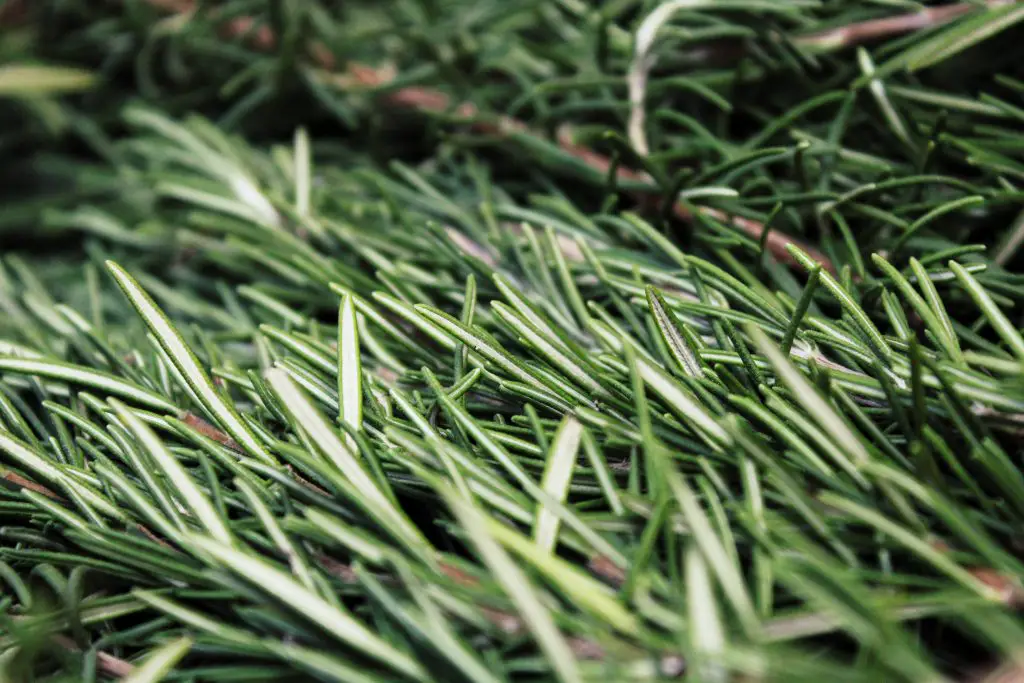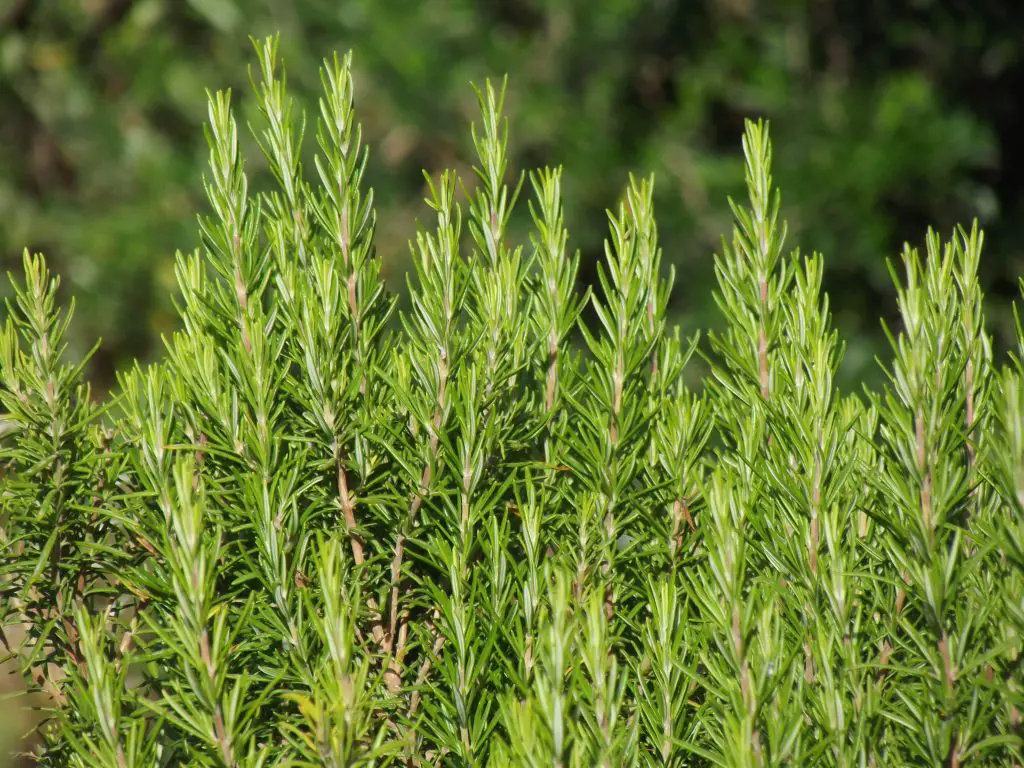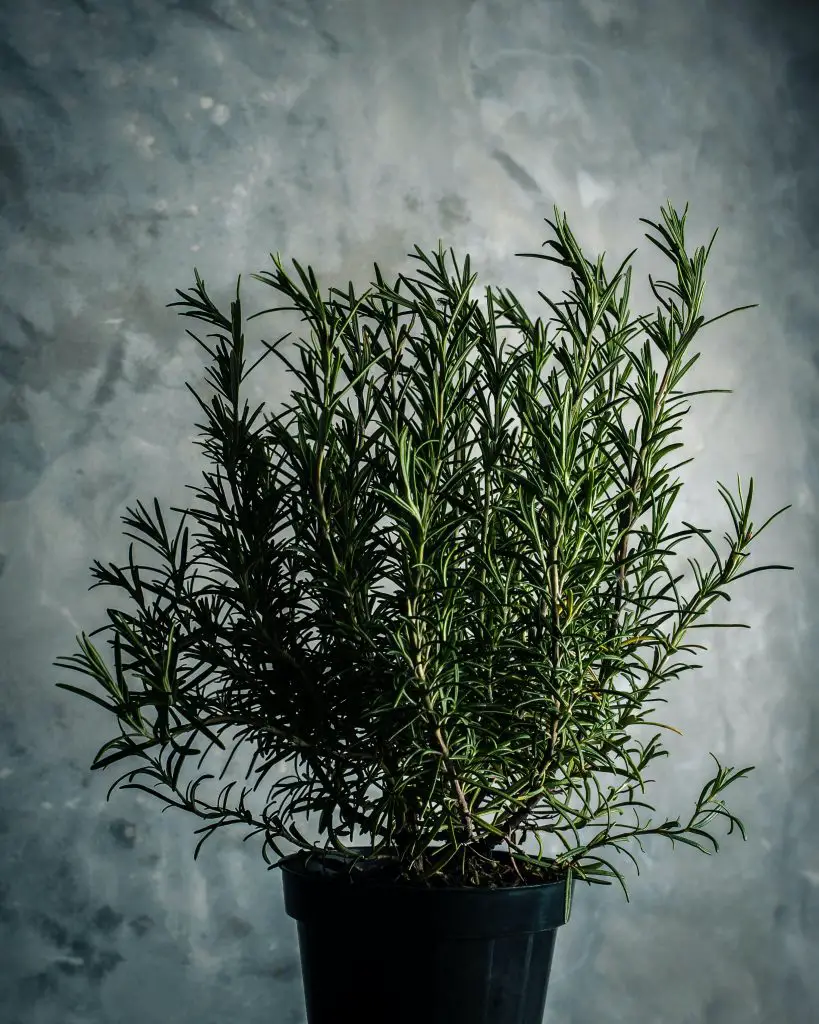Do Deer Eat Rosemary? Rosemary plants are one of the most popular culinary herbs grown in the herb and vegetable garden. They are medium-sized shrub that is somewhere between 2 and 3 ft tall, in most cases, and it produces narrow spine-like leaves that have an aromatic flavor that is excellent with lamb and potatoes, in particular. But do deer like to eat them as well?
Rosemary plants are generally considered deer-resistant plants and are listed on the New Jersey Agricultural Experimental Station website as being a plant that is rarely damaged. This means that deer can still eat the plant, however, it generally occurs only when there aren’t other options available.

Can Rosemary Be Used To Help Repel Deer In The Garden?
In addition to the deer avoiding this plant, it can also be used as a repellent for deer to help protect more susceptible plants in your garden. When planting Rosemary for the purposes of repelling dear it is advisable to place it at the outer edges of the garden rather than interplanting it with other plants as it reduces the chance that deer will enter the garden in the first place.
However, rosemary is unlikely to completely protect your garden in areas that have a reasonably large deer population as they are generally extremely persistent pests.
What Other Herbs Are Deer Resistant?
Aside from rosemary, there are a number of other different culinary herbs that deers do not particularly like. The reason for this is that deer generally don’t like highly fragrant plants and will preferentially eat plants that have a mild scent.
Some of the perennial herbs which are also listed as being deer resistant include plants such as;
- Oregano
- Thyme
- Basil
- Lemon balm
- Mint
- Chives
- Marjoram
- Tarragon
With the majority of herbs being deer resistant one of the potential options to reduce the attractiveness of your plants generally is to place a herb garden in the outer part of the garden.

What Are Other Methods Can Be Used To Repel Deer?
As mentioned above deer can be an extremely persistent pest which means that the only 100% effective method that can be used to keep them out of your garden is to erect a fence that is 8 ft tall as deer extremely good jumpers. To read more about this click here.
The other methods that are most commonly used are to use chemical repellents. However, if the effectiveness of these chemicals does vary depending upon the formulation. Chemicals that induce fear in the deer are by far the most effective types of repellents.
These types of repellants are typically made from things such as coyote urine, blood, and putrified egg. Putrified egg produces sulfur compounds which mimic the smells produced by many of the deers’ common predators which is why it is effective.
However, studies have shown that using a single fear-inducing repellent is only effective for approximately 2 to 2 1/2 months. after this period the deer become accustomed to the smell and begin to feed as normal. As such it is important to vary the type of repellent used if you want to have sustained protection against them.
We generally recommend that you purchase two different repellents and alternate their use throughout the year to maximize the protection. The two that we recommend deer out and plantskydd because they are both fear-inducing repellents that use different ingredients.
The other common method that are used includes motion-activated sprinklers and ultrasound devices along with devices that mimic Predator’s eyes. However, based on academic research these devices have generally been shown to be not as effective as the chemical-based repellents. To read more about the testing that has been done on repellents generally click here.
How to grow Rosemary
Rosemary is a relatively easy plant to grow and can be produced by planting seeds that are commercially available or just purchase a shrub. Subsequent plants can then be produced by cuttings in this case.
If you are starting the plant off using seeds it is best to plant in mid-spring once the weather is starting to warm up. Seeds can be sown directly into the garden, however, we generally recommend that you plant them into seed trays as it provides an opportunity for you to control the climatic conditions more easily.
To sow the seeds start by filling a seed tray with good quality potting mix and then planting the seeds at a depth of approximately half an inch. Once the seeds have been planted the trays should be watered well and then it is important to ensure that it remains moist throughout the germination period.
Rosemary seeds are a little bit slower to come up and can take up to 2 to 3 weeks before the seedlings appear. The plants will typically need to spend 6 to 8 weeks in a seed tray in warm conditions in order to reach a reasonable size at which point they can be planted out into the garden.
When you are ready to plant out in the garden you need to select a location that gets at least 6 to 8 hours a day. In terms of soil conditions, rosemary plants should ideally have rich, moist. and free-draining soil that has a slightly acidic pH. This will help the plant to get off to a good start, however, once it is established rosemary is generally very drought tolerant.
In terms of location, the main thing to avoid is an area where water is allowed to pool for an extended period of time as this has the potential to cause the plant’s roots to rot.

On-going maintenance of the rosemary plant
Rosemary plants are generally very low maintenance once the plant has become established. In most locations, they will generally only need to be watered regularly in the first season or two unless it is exceptionally dry.
The only thing that you also need to be careful of is pruning the plant. To ensure that plant does not get to woody it is recommended that you prune it each season. When pruning it you should avoid cutting into woody sections of the plant because if you cut too deeply the branch will not recover.
To expand your stock cuttings can be easily taken from the plant as either semi-hardwood or hardwood cuttings. The cutting should be approximately 4 inches in length and have the bottom leaves stripped off the stem. Once this is done you can apply plant hormones to the base of the stem before placing it in a pot. To read about how effective they are click here.
While the cuttings are getting established it is important to ensure that they remain moist to ensure that plant does not dry out. Once the roots are established you should begin to see strong top growth which is an indication that the plant is ready to be potted onto an individual pot to allow it to further develop.
I hope you found this post helpful. If you have any questions please leave them in the comments section.
Relevant Articles
How High Can A Deer Jump? (And What Type Of Fence Do I Need To Build To Keep Them Out)
Does Deer Repellent Really Work? (All The Answers Based On Academic Research)
Do Coffee Grounds Keep Deer Away?
Does Deer Repellent Really Work? (All The Answers Based On Academic Research)
